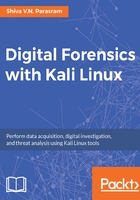
Anti-forensics: threats to digital forensics
As much as we would like the tasks involved in digital forensics to be as easy as possible, we do encounter situations which make investigations, and life as a forensics investigator, not-so-simple and sometimes stressful. People wishing to hide information, cover their tracks, and even those who have malicious intent or actually participate in cyber crimes often employ various methods to try to foil the attempts of forensic investigators with the hope of hampering or halting investigations.
Within somewhat recent times we've seen several major digital breaches online, especially from 2011 onward. Many of these attacks allegedly came from, or were claimed to be the work of, infamous hacker groups such as LulzSec, Anonymous, Lizard Squad, and many others, including inpiduals and Hacktivists (people that hack for a specific cause or reason and are less concerned about doing time in prison). Some of these hacks and attacks not only brought down several major networks and agencies, but also cost millions in damage, directly and indirectly; as a result, the loss of public confidence in the companies contributed to further increases in damages.
These daring, creative, and public attacks saw the emergence of many other new groups that learned from the mistakes of past breaches of Anonymous and others. Both social media and underground communication channels soon became the easiest forms of communication between like-minded hackers and hacktivists. With the internet and World Wide Web becoming easily accessible, this also saw the competition not only between IPs, but also private companies and corporations, which lead to the creation of free wireless hotspots on almost every street with businesses, small or large.
The result of having internet access at just about every coffee shop enabled anyone with a smartphone, tablet, laptop, or other devices to acquire almost unauthenticated access to the internet. This gave them access to hacker sites and portals, along with the ability to download tools, upload malware, send infected emails, or even carry out attacks.